Magic to Do

One person’s error is often another’s opportunity – and that’s exactly how my relationship with Disney’s Epcot Center began.
The famous Florida theme park has held its International Flower & Garden Show in the spring for many years now, and one of the festival’s more popular highlights has long been the program’s “Water Garden Wonders” exhibit.
A local Floridian pond contractor had always taken care of the waterfeatures for the show, but after a series of problems, officials at Disney decided to make a change and I was contacted to see if our company, Aquascape of St. Charles, Ill., would be interested in taking over the pond-construction duties.
I was immediately on board with the idea. After all, how do you say no to Mickey Mouse? My children never would have forgiven me.
After some additional conversations, I met in early 2003 with about a dozen Disney representatives and architects in Orlando to review the designs they had for that year’s display. I expressed some concerns with the plan and found the team open to suggestions, but I could also tell right away that I was going to have to prove myself to this group before they would trust me fully.
TAKING THE RIDE
The two features they had in sketch form for 2003’s event were formal, cut-granite affairs. The first, which was to be in close proximity to visitors wandering by, was a simple pond with no waterfall. The intention was to hide the skimmer with lots of aquatic plants and to provide aeration with a “living rock” lava fountain.
The second planned feature was somewhat more elaborate and had a waterfall and small pond. Given the small space, I tactfully suggested using one of the pondless waterfall systems our company had developed. Once I described the concept and its advantages to the team, they agreed to the alteration.
This pondless installation was to be part of a children’s garden and became a unique challenge when we learned that a play structure was to be built nearby: There were concerns, they told us, that installing it would take several weeks. In addition, there was apprehension about our feature’s proximity to so much frenetic activity.
| 2003: Our first Epcot project included one of our pondless waterfalls – and the challenge of setting it up in close proximity to a children’s play area. Our performance here was impressive enough that we were invited back for the next year. |
The first point was easily set aside: We finished the installation in just a few days with the help of several of our certified contractors. The second point proved trickier, as we found out that, as installed, the waterfeature was actually two feet closer to the playground than planned.
After much deliberation back and forth, it was determined that it would be easier to relocate a few palm trees and move the playground back a few feet rather than rip out our work and start all over again. It was a satisfying solution, but it taught me several lessons about working with Disney and helped me see the lengths to which park representatives would go in preserving the integrity of their creative vision.
As part of the agreement with Disney, I was to give seminars every 90 minutes to gatherings of show visitors. I was thrilled when 30 to 50 people interested in watergardening started showing up regularly, and things went well enough from the park’s perspective that I continued with these programs for the next two years.
After that third year, the format of the festival changed and the presentations were discontinued, but we’ve been creating waterfeatures for the International Flower & Garden Show ever since that first call in 2003. In fact, immediately after our first year’s effort, we were pleased when Disney locked us in for the next year. In fact, much to the absolute delight of my children, Aquascape has become Epcot’s official waterfeature partner for the garden show – and we haven’t looked back.
As the program has progressed, the designs have gone through several iterations and have moved to various locations in the park. The constant has been the support of our contractors, who annually come in to do what has always proved to be challenging, unique and thoroughly memorable work.
YEARLY GATHERINGS
When 2004 rolled around, I was called in to meet once again with the Disney team and must concede that I was somewhat taken aback by what they had in mind.
As I learned, the Epcot complex includes an area of sunken concrete near the “Mission to Mars” exhibit that’s intended to reclaim water used to wash down all of the concrete in that area of the park as well as to control and channel the rainwater that regularly (and sometimes heavily) falls in central Florida. They described it to me as a critical system – then told me they wanted us to create a pond/waterfall system directly on top of the sunken area in such a way that the display wouldn’t impede its flood-control function.
Once I evaluated the situation, I suggested using drainage board to elevate our pond above the concrete surface by approximately an inch. Atop that, we’d install the liner, rocks and gravel to create our ecosystem.
| 2004: The space we were given was large but rigidly enclosed – and still had to serve its key function as a drainage and flood-control point. We ended up suspending our pond over the concrete and taking full advantage of the existing hardscape. |
But that wasn’t all: The space we were given was also hemmed in by concrete walls and a built-in seating area. To build our waterfeature over existing concrete structures that had to be returned to their normal state after the show offered me a challenge I’d never experienced to that point in my pond-building career.
Again, once I had a chance to reflect on the situation, we were able to turn the structures to our advantage by incorporating the benches as shelves for our aquatic plants. We used the same liner we’d been planning to use, but now we added a rock-friendly underlayment to protect it and then filled the area with rock and gravel to shape planting pockets and rows.
Away from the benches, we also rocked-over a 5-foot-tall concrete wall to create a natural-looking waterfall, topping the composition off with several bamboo-covered copper pipes we used to shoot water back into the pond and taking full advantage of the large oak trees that loomed over the site to provide a beautiful backdrop for our oasis.
One Disney dignitary became so attached to this particular feature that he made a point of stopping by to look it over every day during his daily rounds of the park. In fact, he went so far as to request an impact study to determine the consequences of keeping the feature right where it was after the show ended. For a variety of reasons, the proposal wasn’t feasible, but we were proud and happy that it had been considered at all.
SYMBOLIC GESTURES
Perhaps because of the success of the 2004 display, we were assigned the same space for our watergarden in 2005. The design was roughly similar, but to keep things fresh we changed the rock type and varied the aquatic plantings. There was also a surprise built into the package once our work was complete.
As hard-core Disney fans know, representations of Mickey Mouse’s head and ears appear in various and sometimes unusual spots throughout the park. (In one case, the visual can be appreciated only in an aerial view: One of the parking lots is set up using the famous shape.) For park visitors, it’s like a game of “Where’s Waldo,” and some of them spend hours spotting the image.
To make a long story short, once we finished our work, Disney officials decided to deploy the Mickey Mouse symbol in the bottom of our pond, using rocks to outline the shape. That was quite a feather in our cap – and lots of fun as well.
But speaking of feathers, the following year placed the proudest one of all in my design cap: For 2006, instead of being presented with sketches of waterfeatures prepared by the park’s designers and architects, the panel asked me what I thought we should do.
| 2005: We worked in the same place and used the same suspended approach that had proved so successful the year before – and this time we were honored to have our pond included in Epcot’s program of placing Mickey Mouse’s famous silhouette at surprising locations throughout the park. |
Everything I’d heard about Disney operations to that point told me how reluctant they were to cede any control of the reins to an outsider as they worked to create fantasies and pleasurable experiences for millions of visitors. I was challenged and humbled at the same time – and proud of the team of contractors who’d helped me win the trust of the garden show’s creative team.
It was a whole, new world: For the first time, we met with park officials and landscape architects from Day One to determine where we’d put our latest display.
The only ground rule we were given was that the location had to change after two years to keep things fresh – which meant, of course, that my days of hanging ponds over concrete were gone. After careful consideration, I decided we should offer a progression of waterfeatures near the entrance to the World Showcase to take advantage of its high traffic and extreme popularity.
My idea was that a visitor interested in watergardening might decide to start out first by dabbling in container watergardens to get their feet wet. From there, we’d progress to a small pond or pondless feature and then move along to a full-scale pond. Once the location and the parameters of the project were decided, I was entrusted with developing designs for each of the display’s five waterfeatures.
PRACTICALITIES
After details for the 2006 show were settled, a group of our contractors rolled into town, and we all met to review the designs and determine how we’d execute them. We all had the sense of moving up the Disney ladder, advancing from pairs of waterfeatures in previous years to doing five this time.
With these increased responsibilities, we all knew we had to collaborate as never before to make certain we’d all stay on the same page during construction.
| 2006: This time, we moved ahead with a design of our own devising and used the space allotted to us to introduce visitors to the various levels of watergardening in which they might get involved, from the elementary to the relatively sophisticated. |
What’s unique about building anything at a Disney facility is that everything happens in the park’s off hours – in our case from midnight until 8:00 a.m. Nothing can interfere with the Disney magic, so no hint of construction is allowed to detract from the overall impression the park makes. In practical terms, this meant that, before ending a shift, we all had to clean the area meticulously and hide any hint of disruption before the public arrived.
With a couple years experience under our collective belt, we were ready to work within those constraints and systematically lined up our features. We started with the simplest – a grouping of container watergradens displayed around an existing fountain – before moving on to a small, preformed pond and fountain that showed the next step a watergardener might take.
| NIGHT MOVES: From the start, working on these installations has meant working at times when the park is closed. These night shifts are challenging, but the burden is eased by the participation of so many experienced installers. |
Next came a pondless feature, then an eight-by-11-foot pond and, finally, a large, advanced pond with multiple waterfalls. To explain this program, the area was set up with attractive signage that completed the water-related package.
It seemed like a wonderful program to us: Not only was it beautiful, but it also gave us an opportunity to teach large, enthusiastic crowds about the joys of watergardening. Yet our pathway to that level of satisfaction was not as smooth this time as it had been in previous years: A bit to our surprise, our location required us to work around an abundance of underground pipes and cables.
It was as bad as working around thick tree roots, because nothing was buried more than six to 12 inches deep. And where some of the lines were marked, not all of them (particularly the irrigation pipes) had been traced. Once we moved past our initial dismay, we figured that these turns of events aren’t all that uncommon for contractors working around the park, because Disney officials simply handed us a list of emergency numbers to call if anything happened.
The upshot was, where we normally would have used excavation equipment on the larger features, we had in this instance to dig everything by hand – a fact that made the work both more physically difficult as well as somewhat more nerve-wracking.
All in all, however, things worked out beautifully once we established our working rhythm. In addition to the ponds themselves, we also set up a winding walkway of recyclable pavers and ADA-approved foot bridges throughout the watergarden complex to give visitors greater access. Once we were done, Disney’s landscape staff added shrubs and bamboo fencing for safety as well as some finishing touches intended to give the area a mature, established look.
INCREASED COMPLEXITY
The response to this grouping of ponds was so highly positive that we chose to work in the same area again in 2007 despite the subsurface challenges.
But rather than show a succession of waterfeatures this time around, we decided to showcase effects that were popular among consumers at that time. To that end, we included a pondless waterfall, a six-by-eight-foot pond and an eight-by-11-foot pond along with a series of overflowing urns, fountain rocks and a stream system that meandered beneath a walkway into a large pond complete with three waterfalls and a bog area.
These were installations that fully showed us the advantages of having won the full faith of Disney officials: Where most of the show’s contractors are required to supply detailed drawings of their projects, we didn’t need to supply that detailed sort of information – a point that worked in our favor as it allowed us a certain level of on-site improvisation to make things look and function their best.
| 2007: We were in the same space as we’d been the year before, but we used a different approach this time and showcased some systems we knew to be popular. Three ponds were featured, and we augmented them with a meandering stream and overflowing fountain rocks and urns (including one with a famous silhouette). |
After our two-year stint near the World Showcase, we needed to move to a new location in 2008 and take a fresh look at the suite of possibilities we were asking visitors to consider.
This time, we were particularly excited because our company has released a rainwater-harvesting system that fits in with our own corporate philosophy of sustainability as well as Disney’s. We also installed several decorative fountains and “Water Gardens of the Future,” which featured an eleven-by-16-foot pond and a pondless waterfall.
To bring the rainwater-harvesting system to life, we designed the façade of a home (built by the Disney team) and used it to help visitors visualize and track rainwater as it flowed from the roof to the gutter and downspout before passing to an underground reservoir in which the water is filtered before shunting it into the waterfall/stream/pond system or diverting it for irrigation or further storage.
It’s our most elaborate garden-show display ever, and we’re pleased that in addition to being visually attractive, it’s also teaching park visitors about important principles of sustainability and responsible water control and use.
A GROWING SHOWCASE
The International Flower & Garden show is currently the largest special event Epcot hosts, and in the years since it started the head count has grown from 1.3 million to 2.5 million attendees. Despite the challenges of working the graveyard shift to construct waterfeatures that will be dismantled ten weeks after we install them, we at Aquascape and all the contractors we involve in these projects have agreed that we’ll keep coming back as long as Disney will have us.
| 2008: This time, we expanded on the educational function of our displays by setting up a rainwater-harvesting system and demonstrating ways in which the flows could be used for irrigation, to keep a stream/pond system rolling or to provide water for artful fountains. |
How could we turn our backs on the pleasures of 3:00 a.m. coffee-and-energy-drink runs to local convenience stores? Or the backstage glimpses we get of Disney characters getting ready to fan out once the sun peeks over the horizon? Or the joy of working in and around iconic settings recognized by millions worldwide?
Our experiences through the past half-dozen years have given us all a chance to see the magic that goes on behind the scenes first hand and I have to say that the same feelings I experienced as a child have carried over to my adult years because of the time I’ve spent working on these displays. Perhaps the awe I felt as a child has grown from wonderment to the sort of respect one develops for orderly, efficient business operations, but it’s still awesome and gives us all a sense of accomplishment we all enjoy, year after year.
Ed Beaulieu is chief sustainability officer at Aquascape, Inc., of St. Charles, Ill. In that role, he has installed numerous custom waterfeatures, from small ponds to large lakes and commercial waterfeatures. He holds a bachelor’s degree in zoology/limnology as well as a master’s degree in marine biology. Now focusing on sustainability, Beaulieu incorporates water quality, storage and habitat considerations into custom landscape designs that have been featured in such publications as Architectural Digest, Better Homes & Gardens, Nature’s Garden and Irrigation & Green Industry News, among others. He has been project manager for the company’s waterfeature installations at the Flower and Garden Festival at Disney’s Epcot Center in Orlando, Fla., for the past six years and has also appeared on various shows on the HGTV and D.I.Y channels.










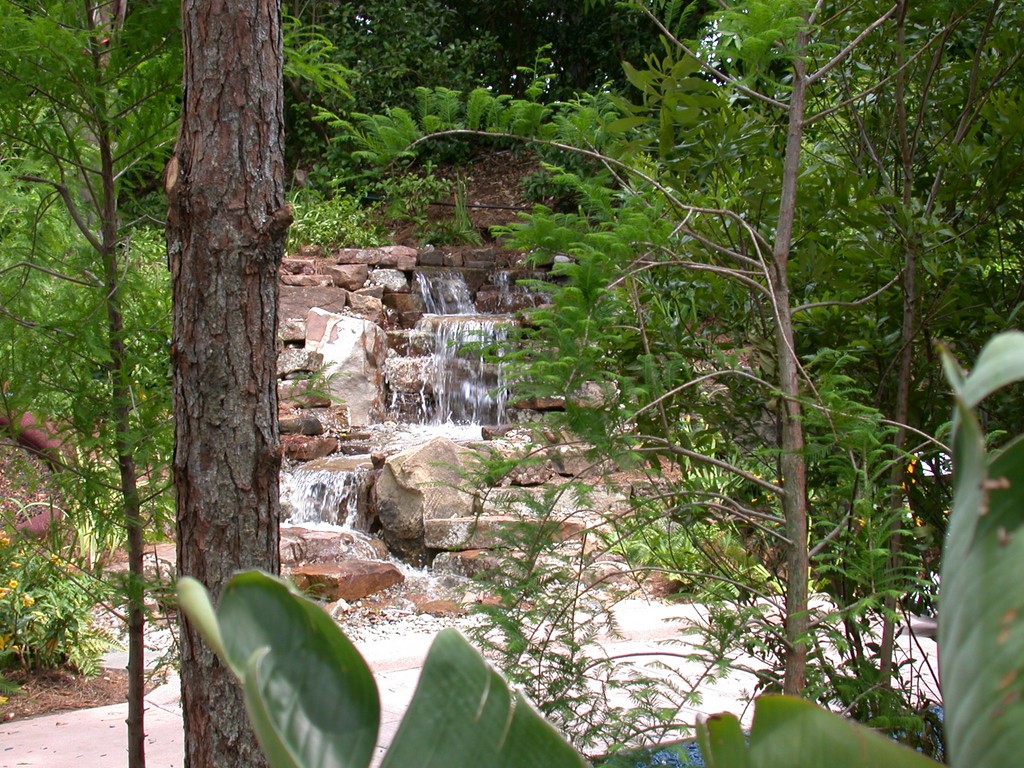
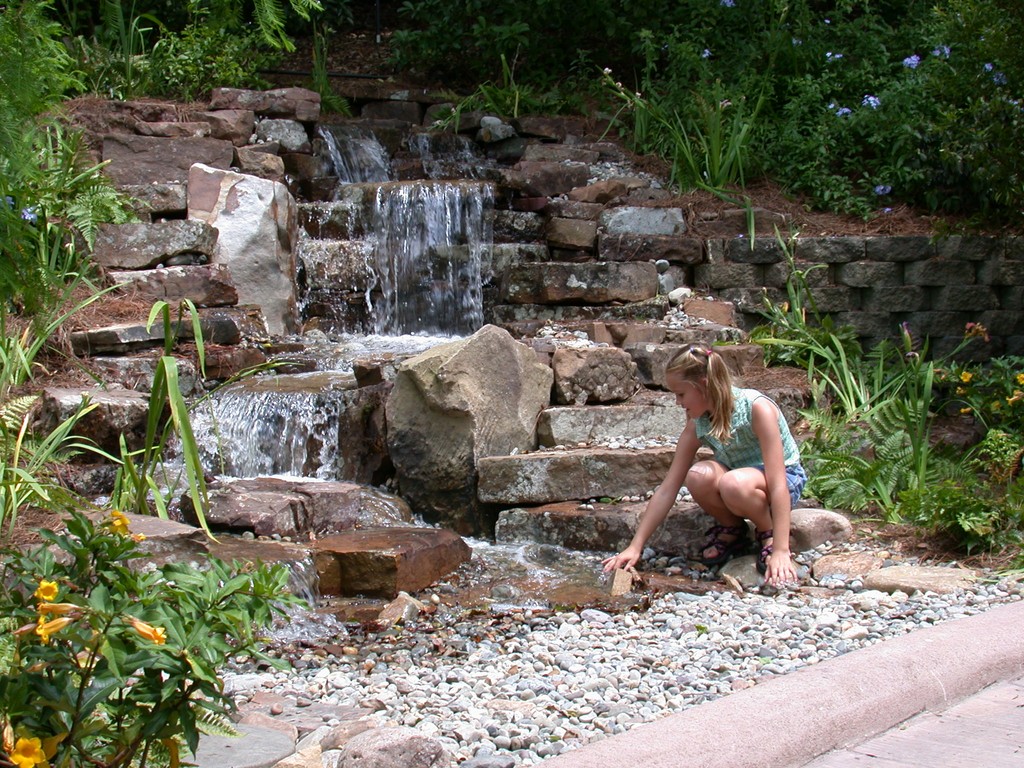
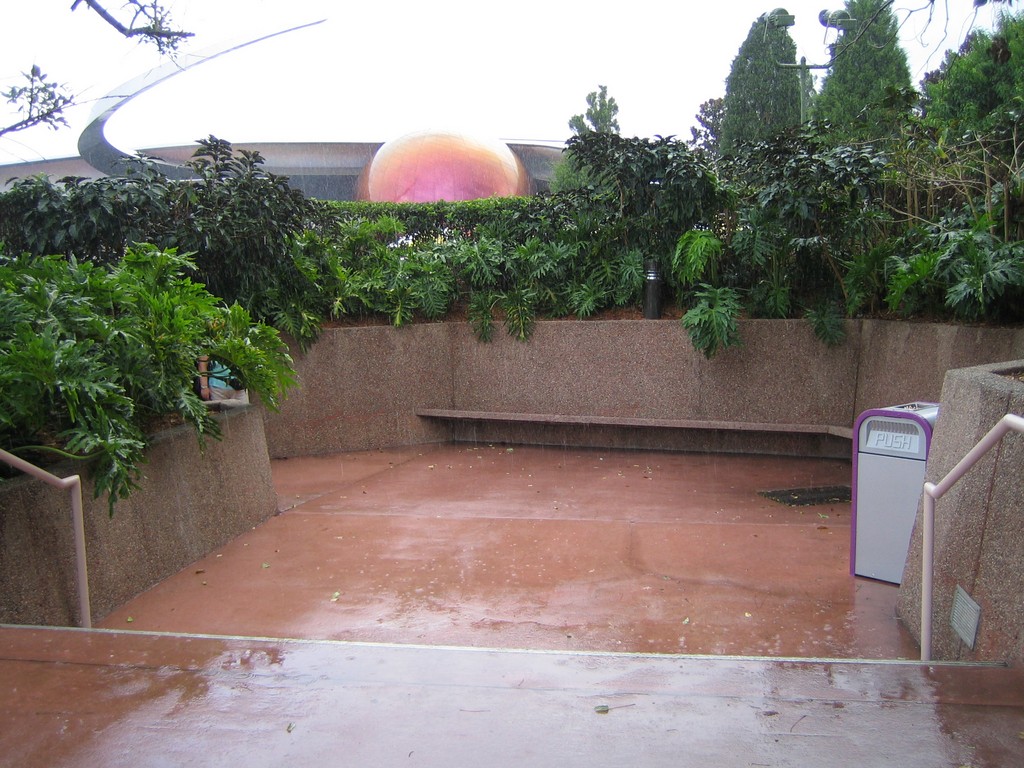
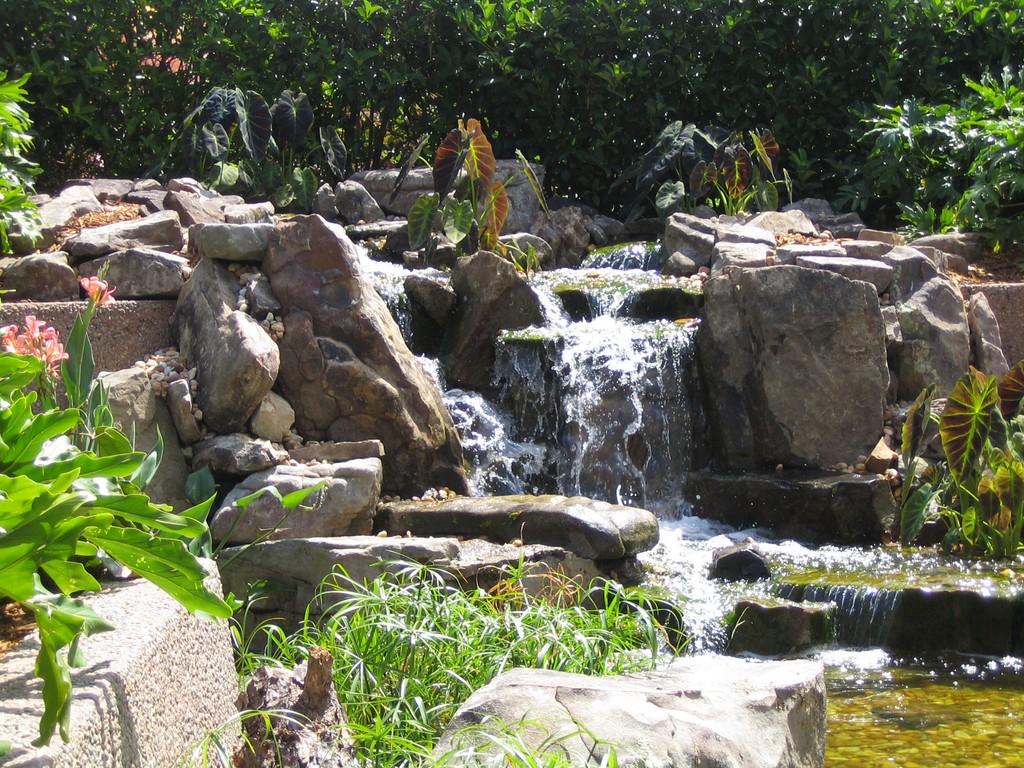
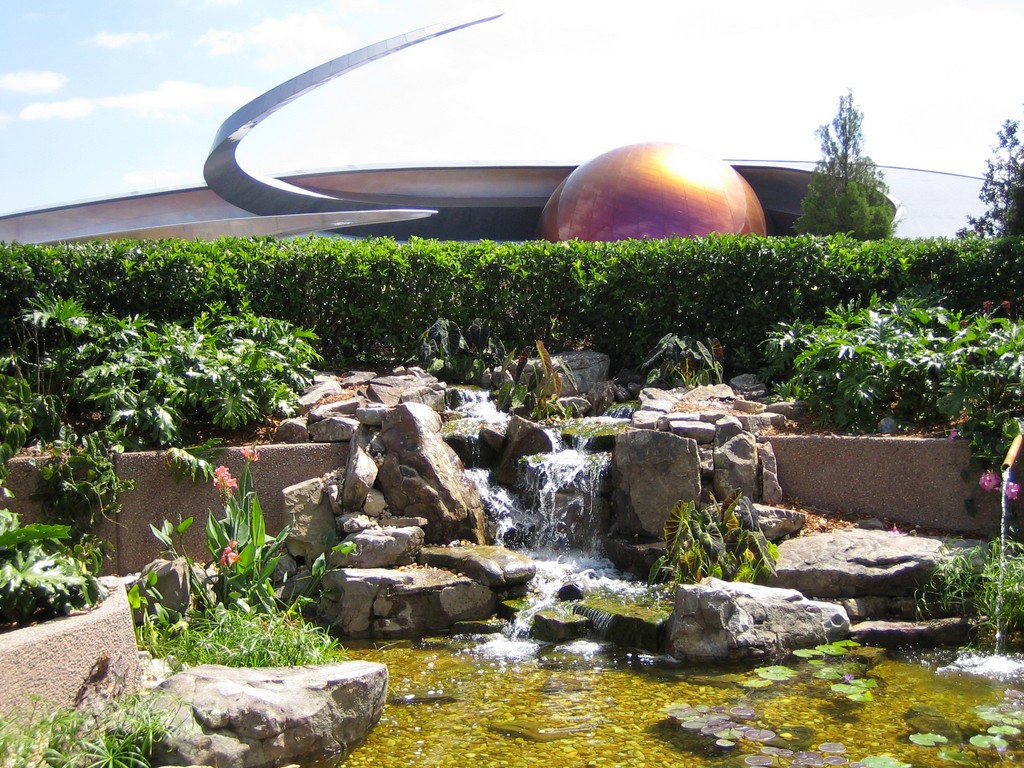
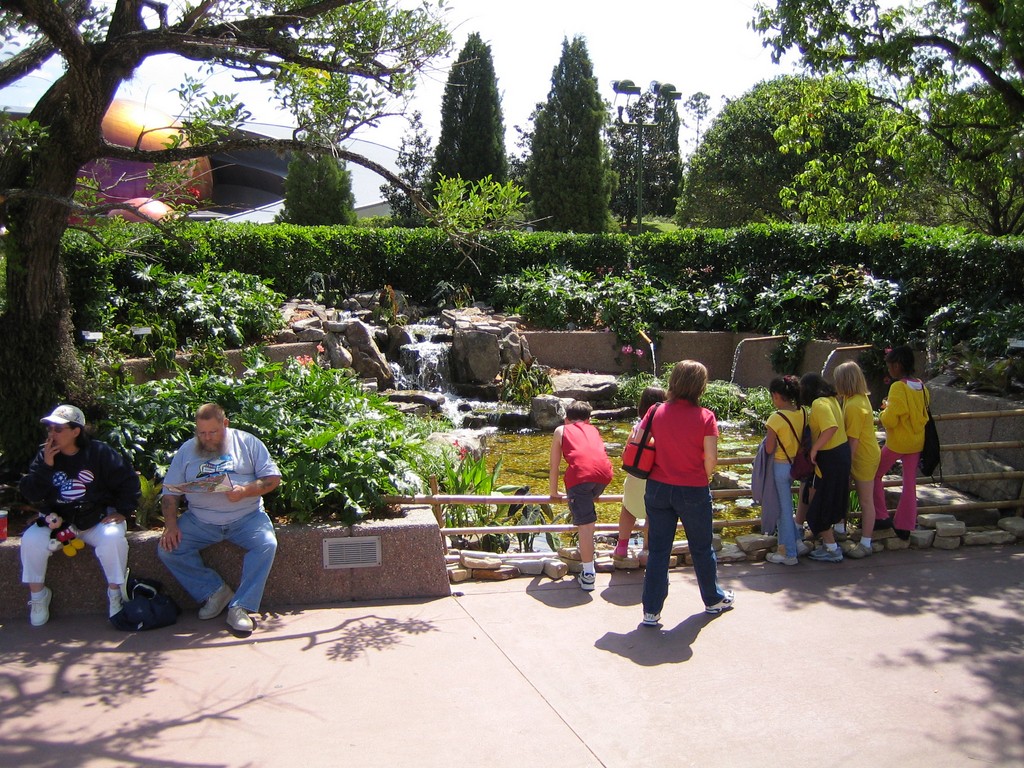
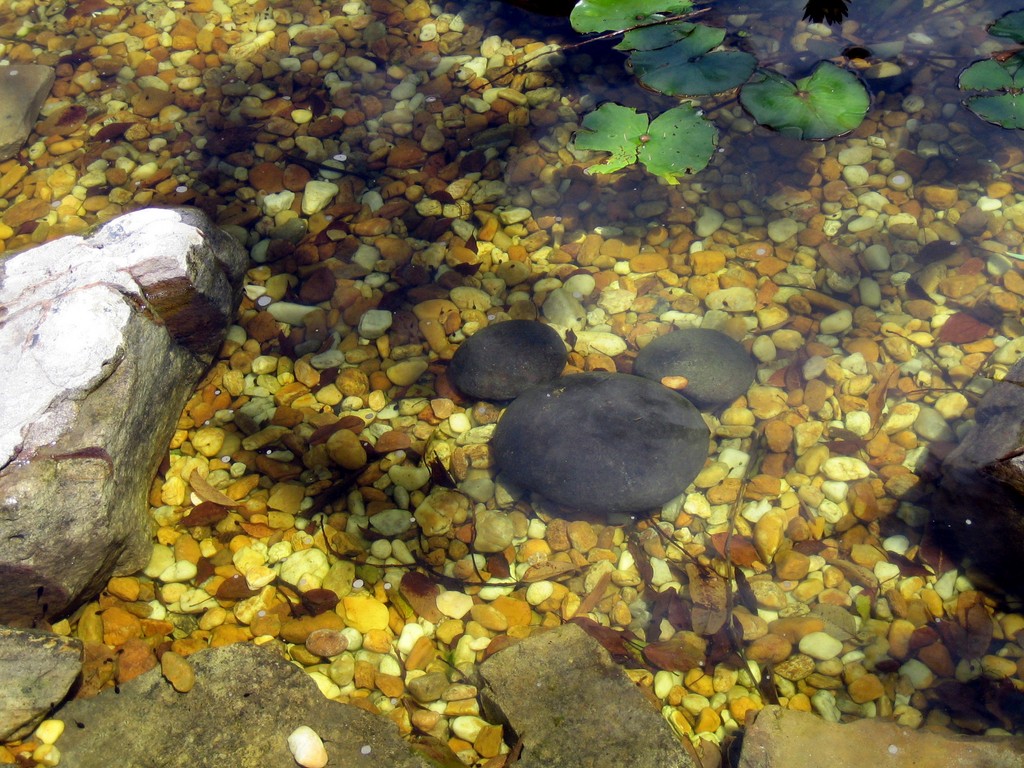
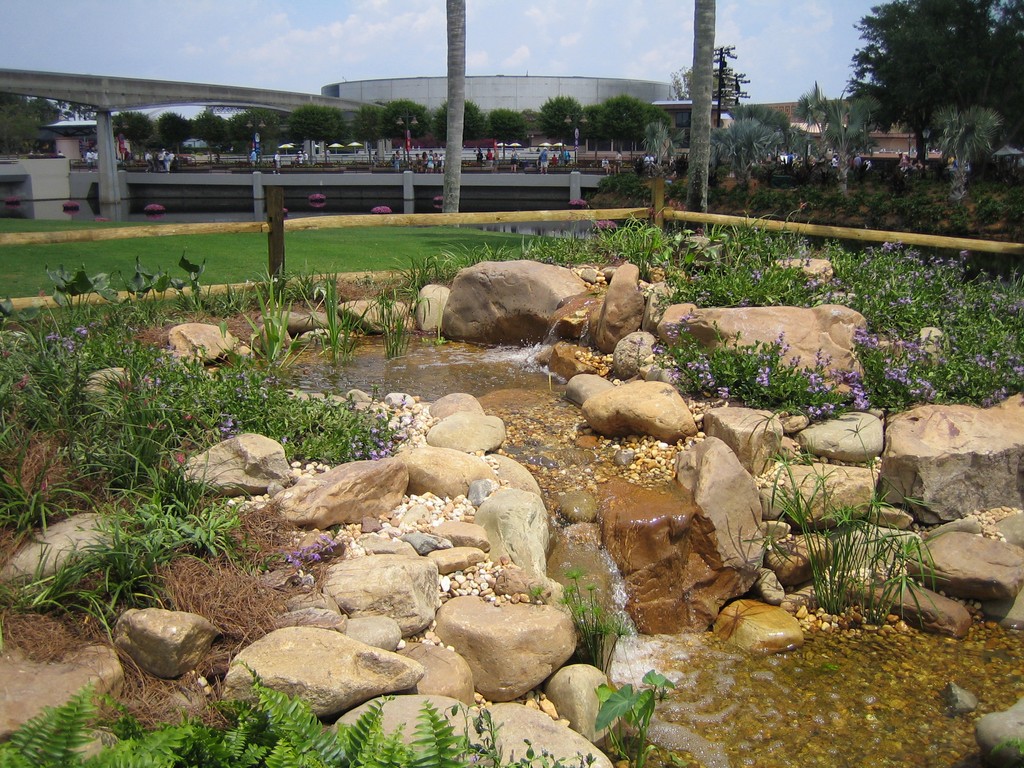
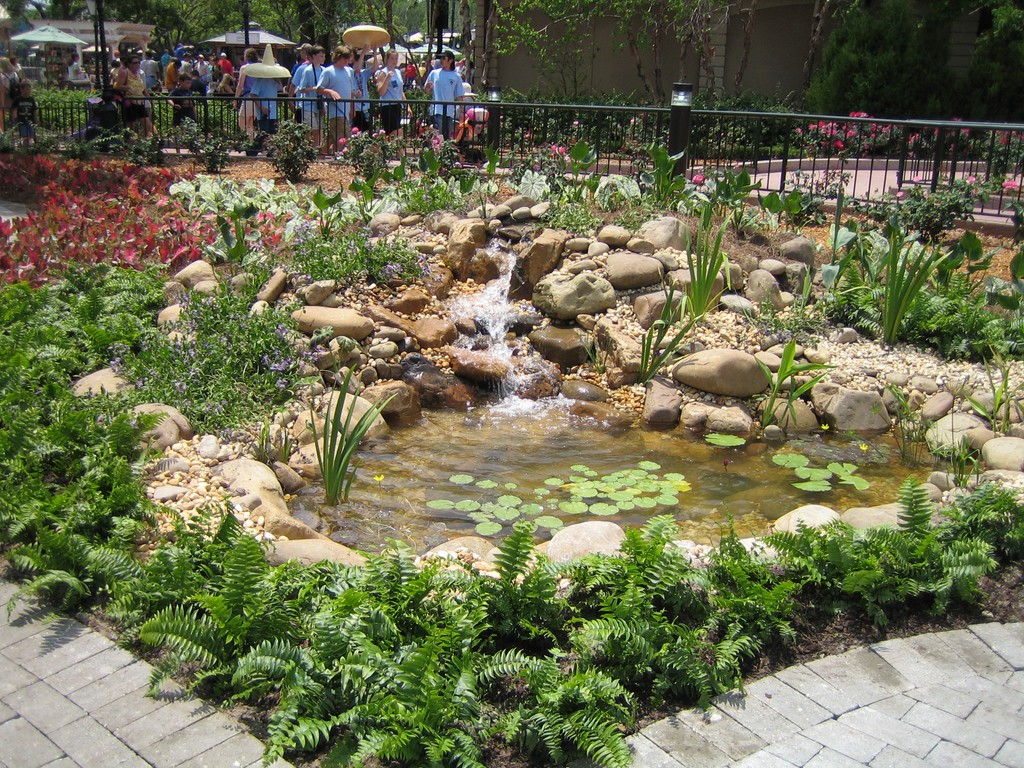

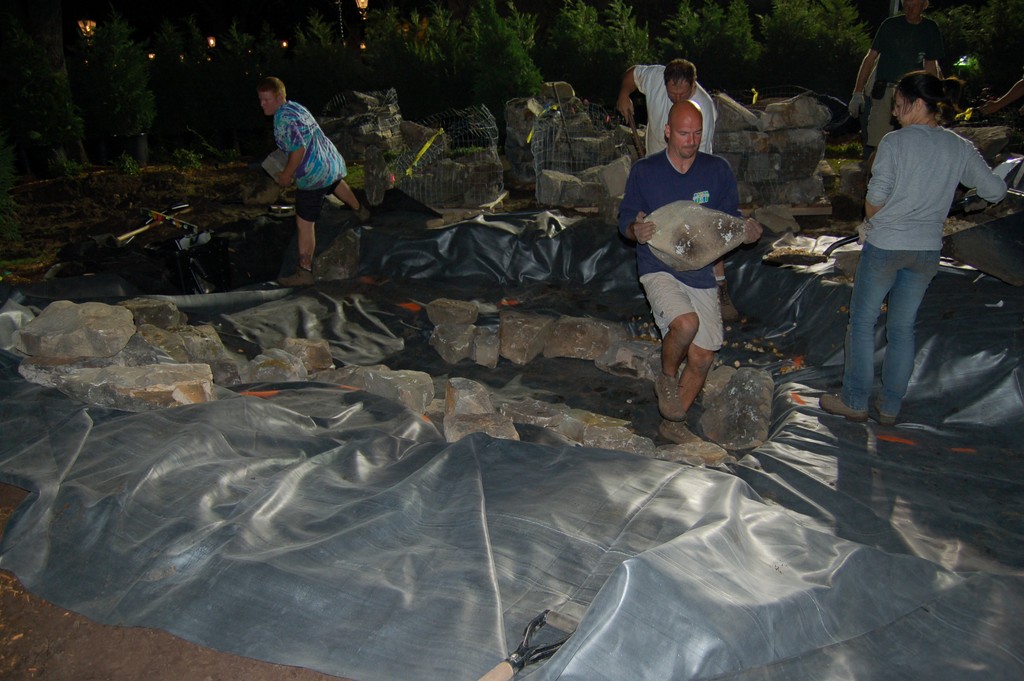
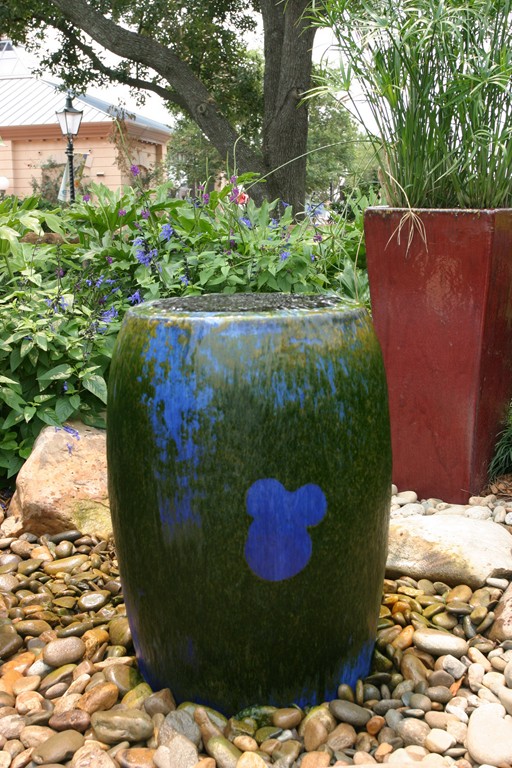
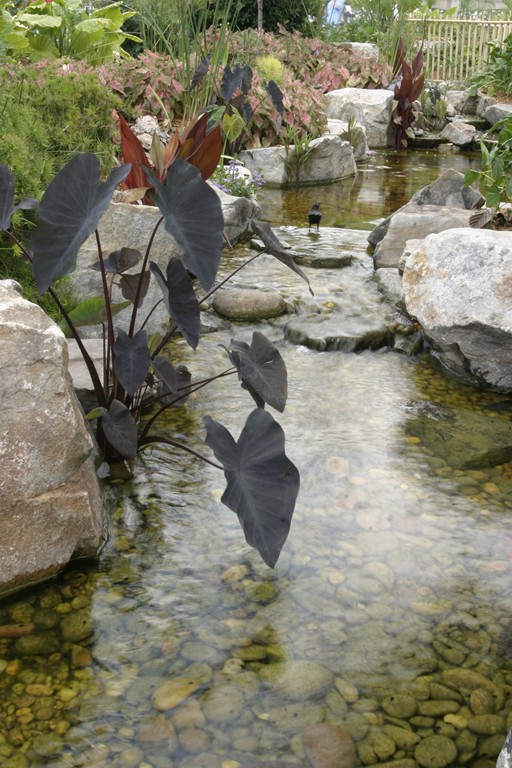
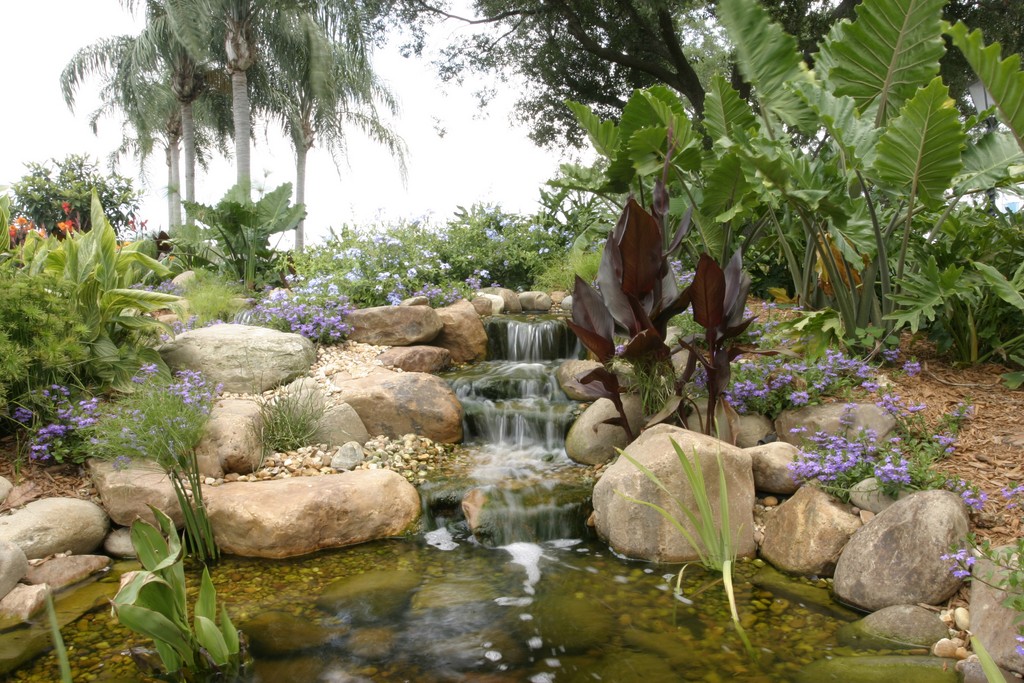
.JPG)
.JPG)
.JPG)